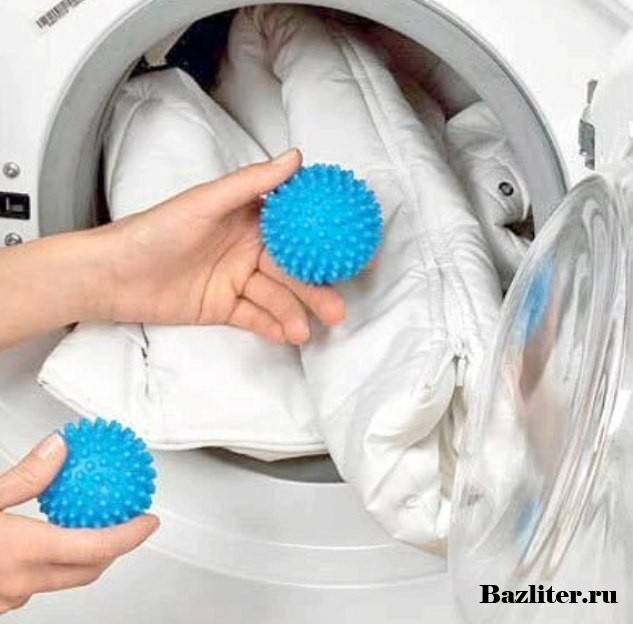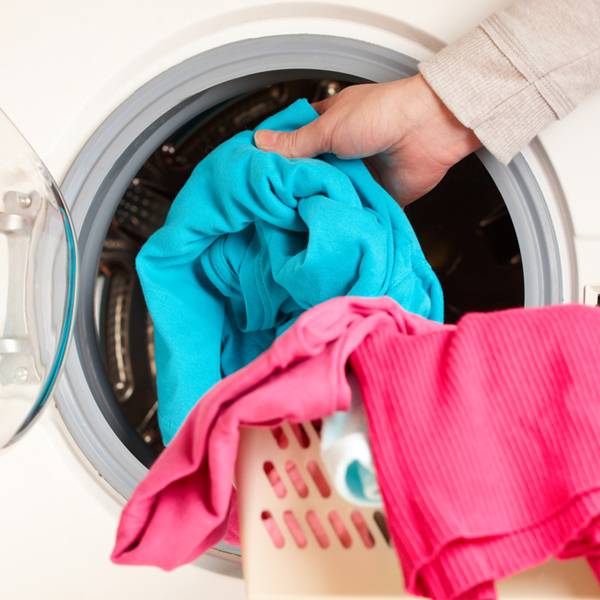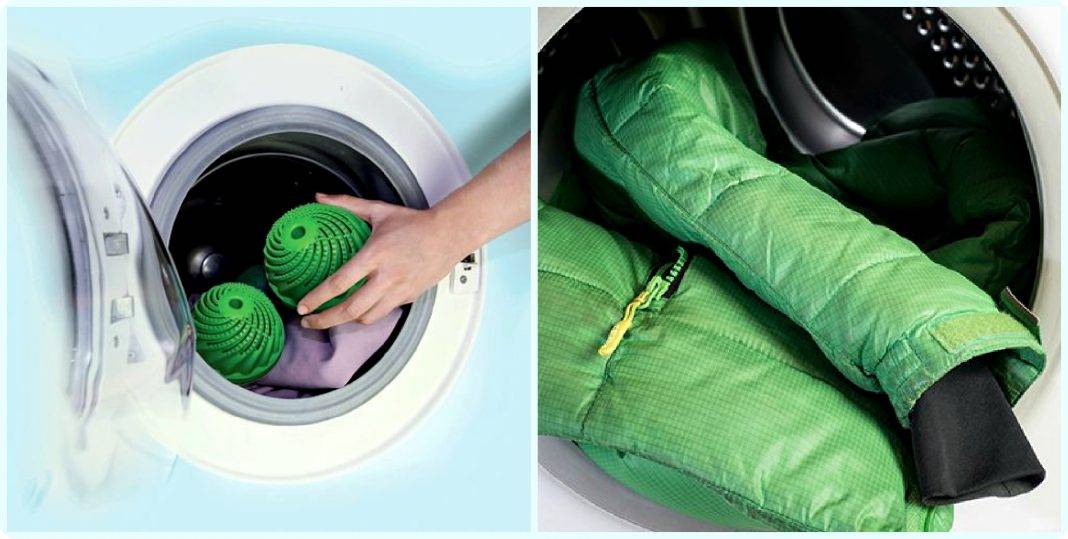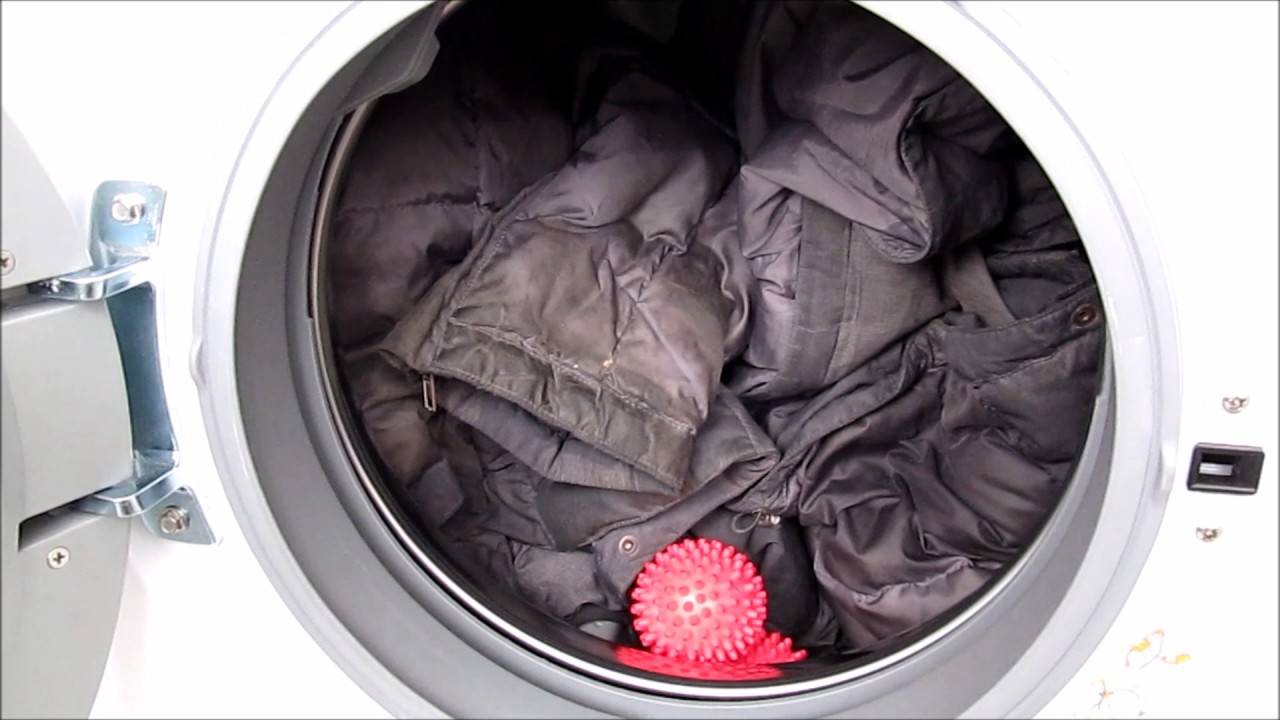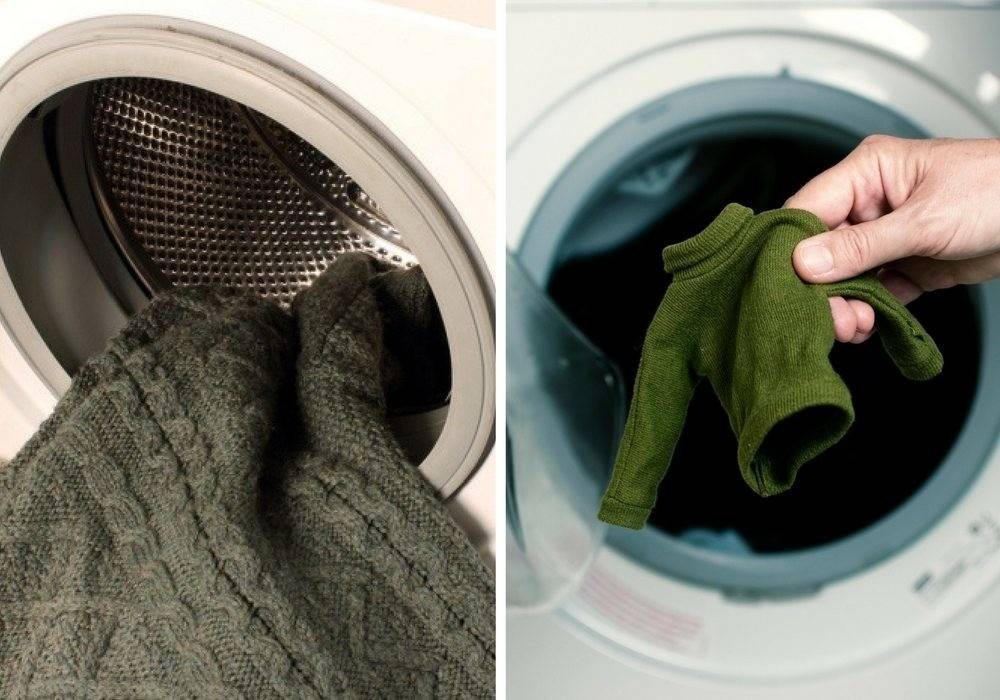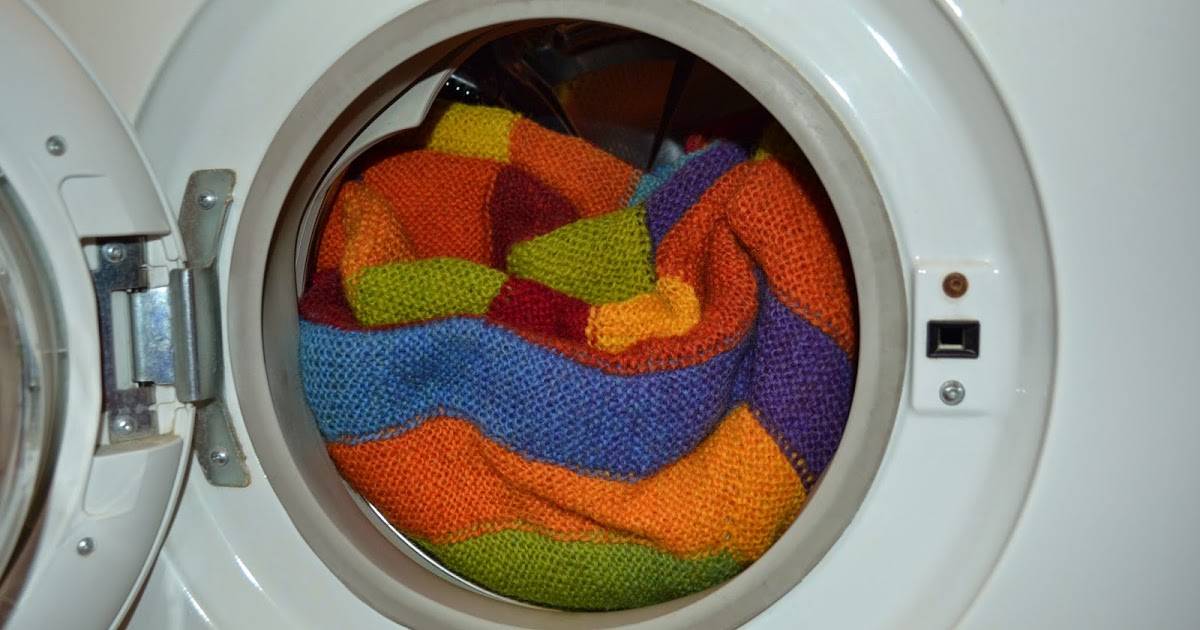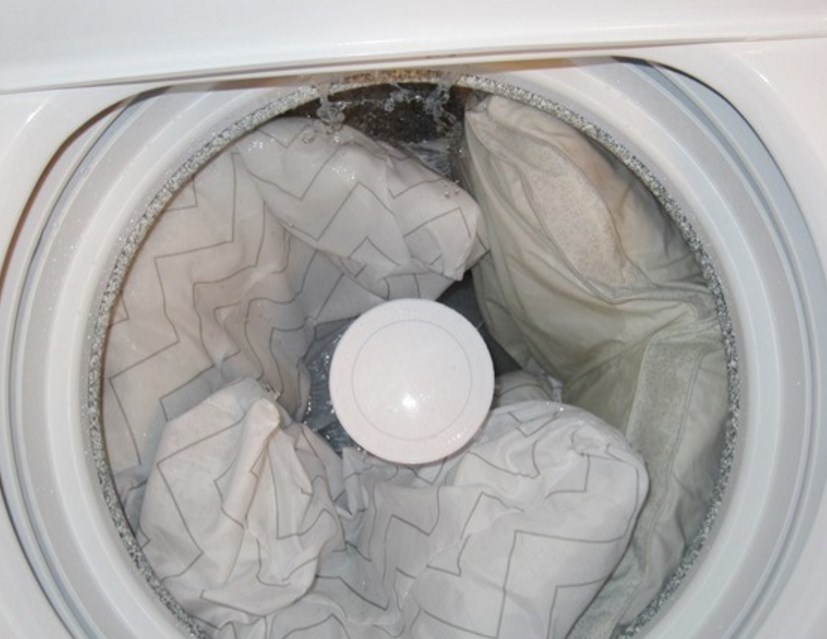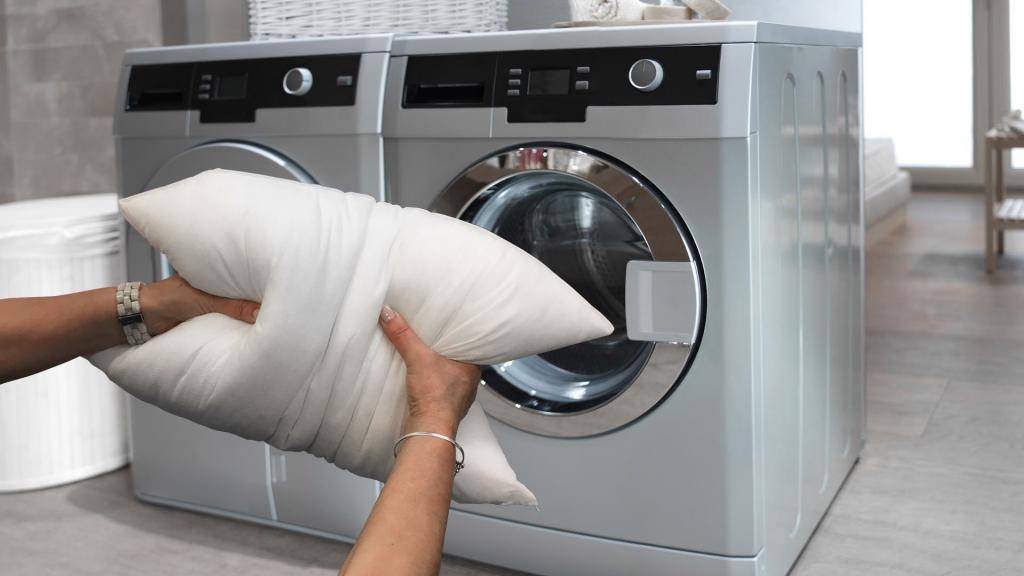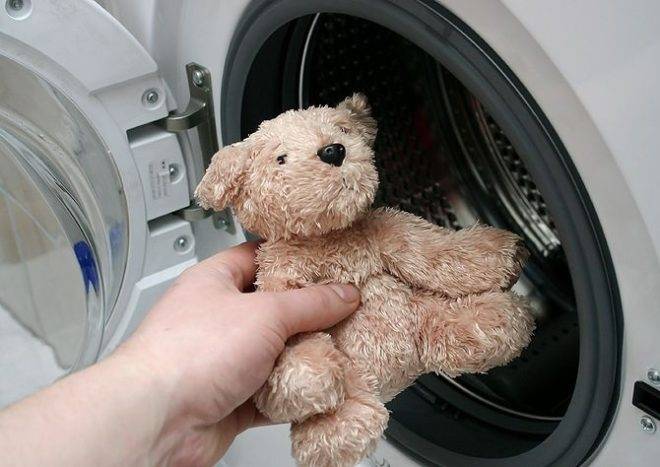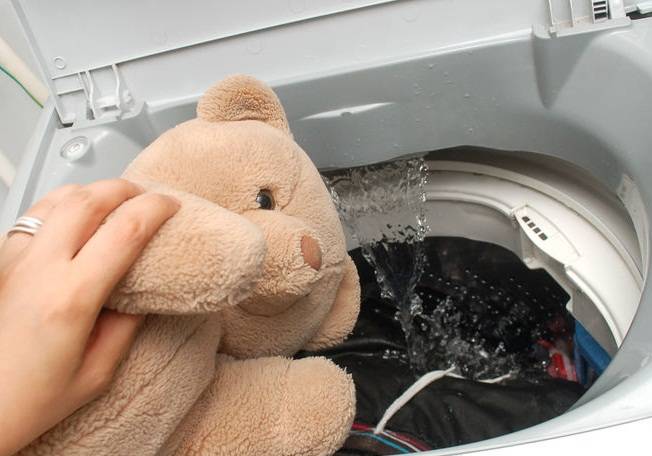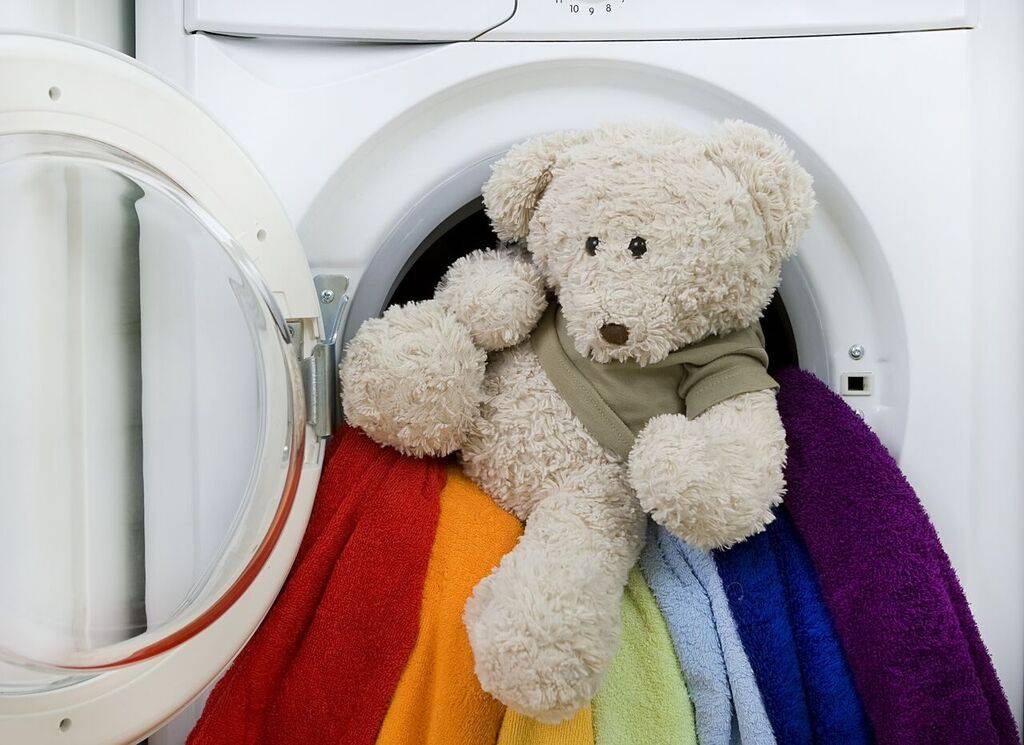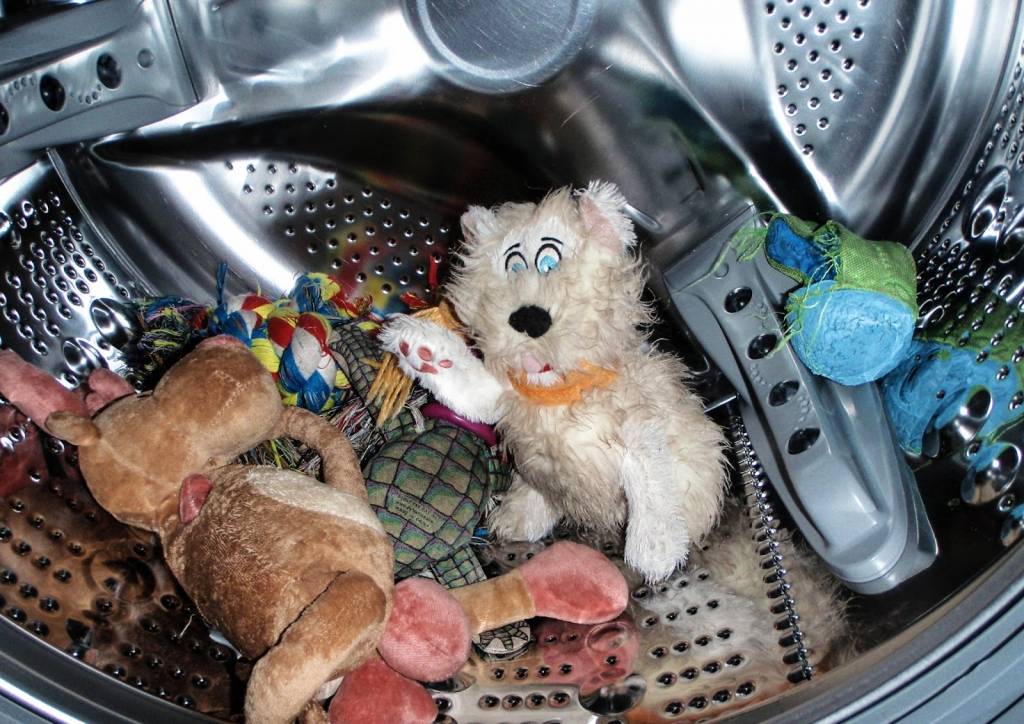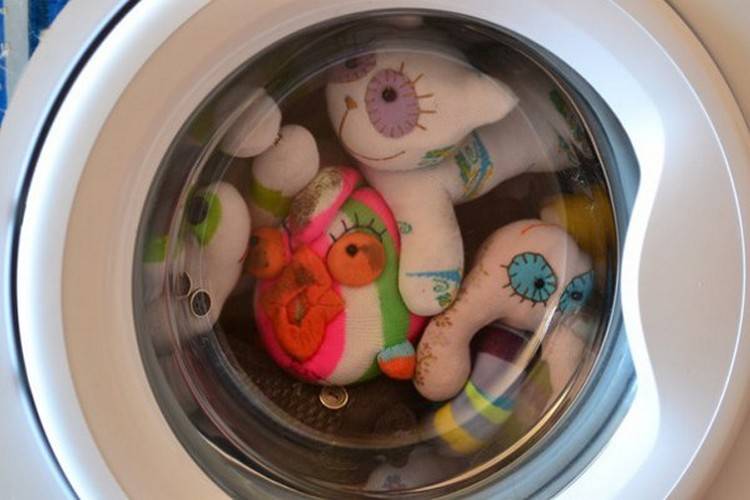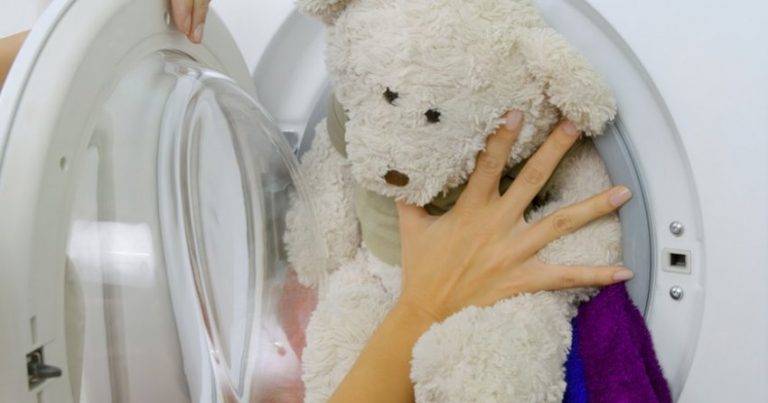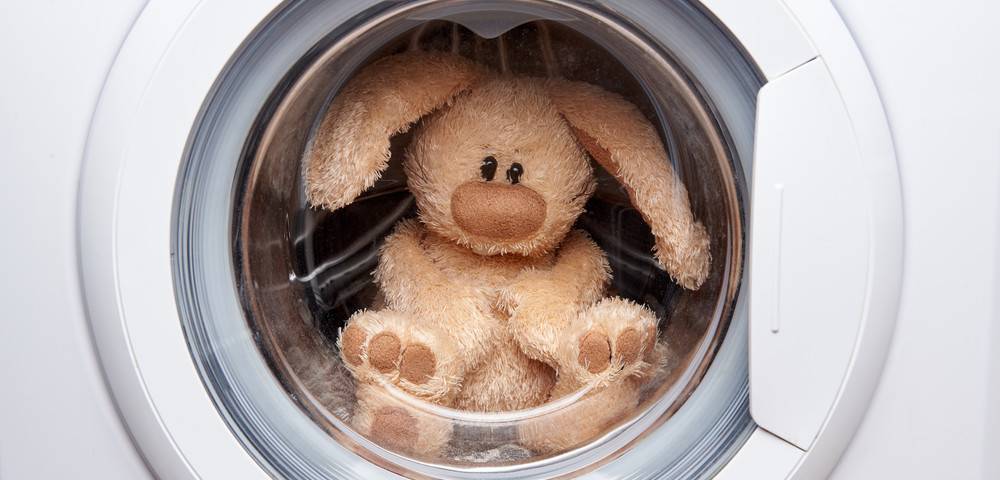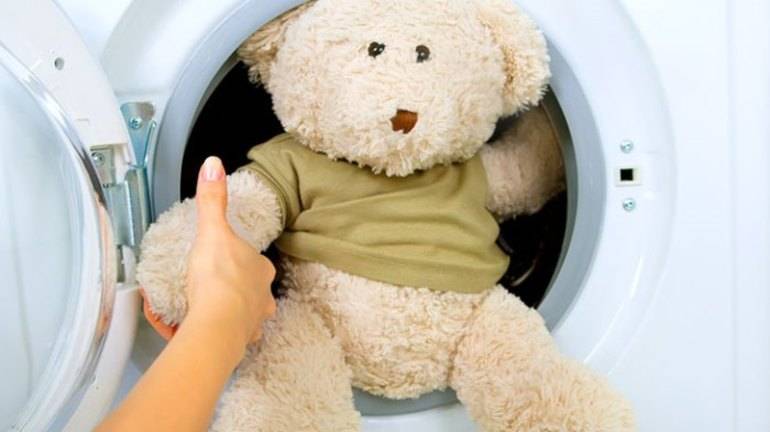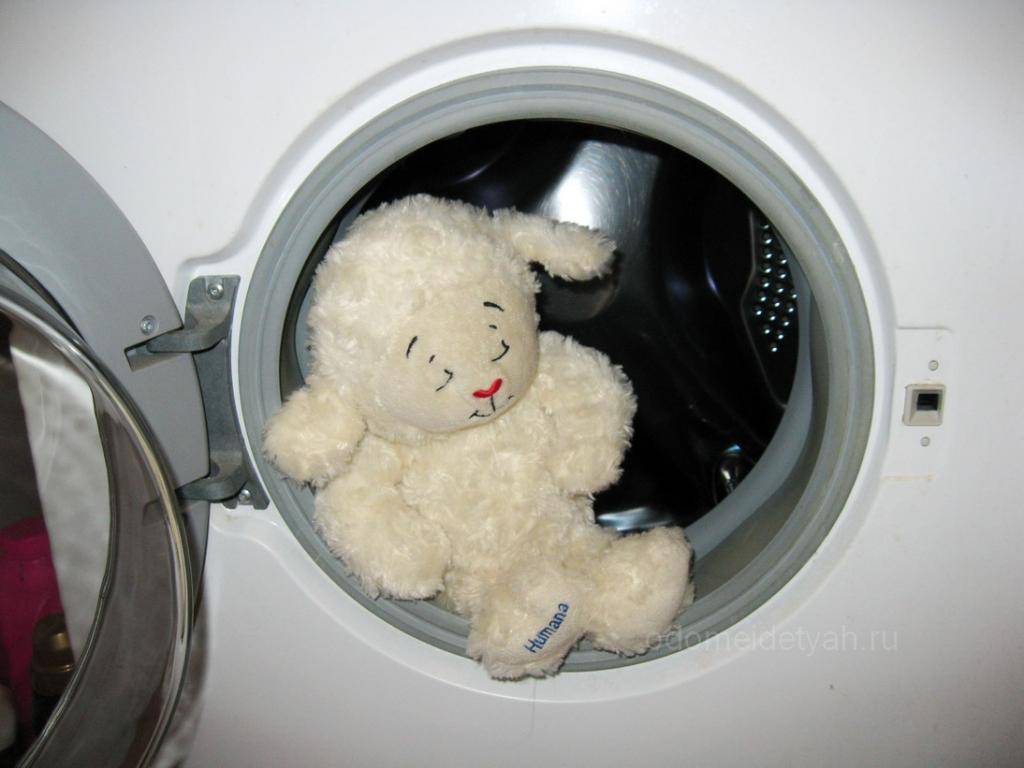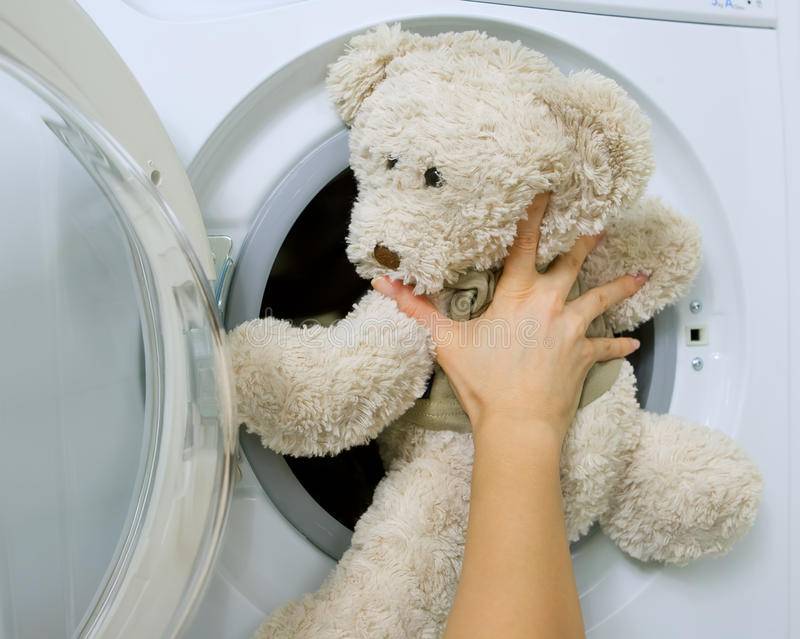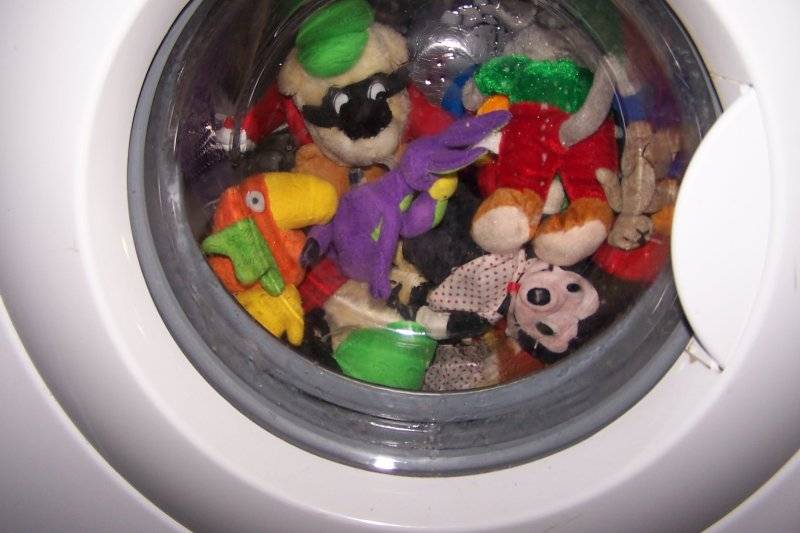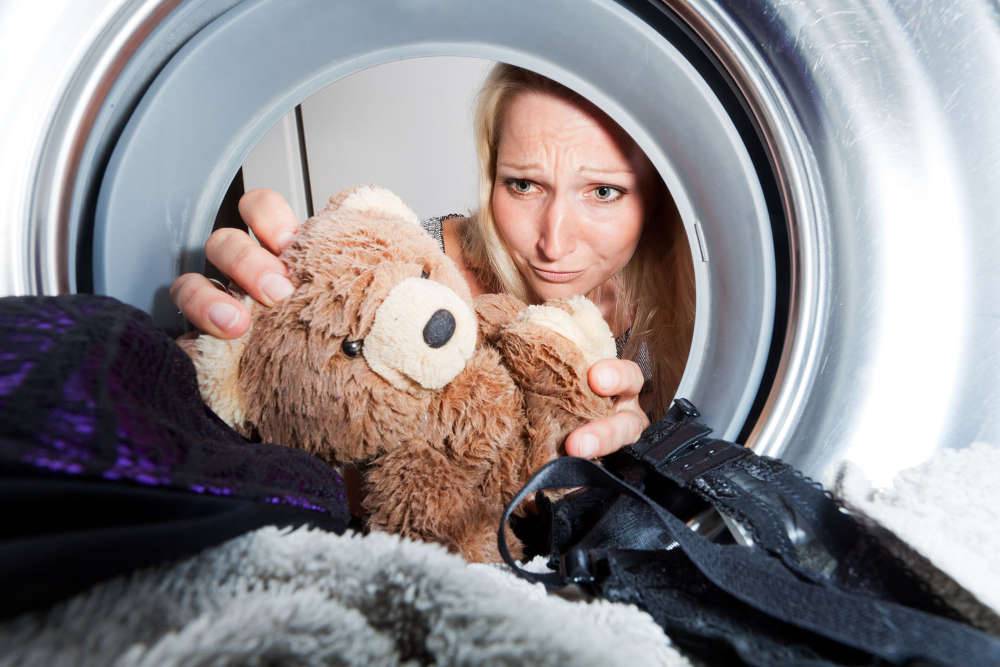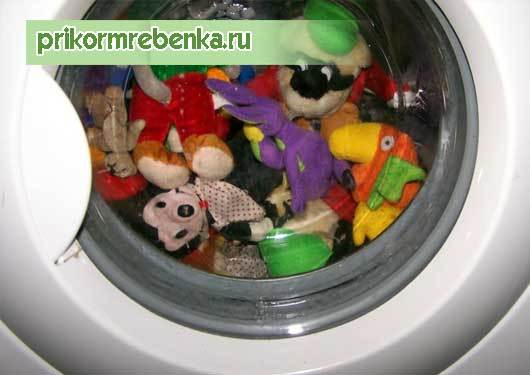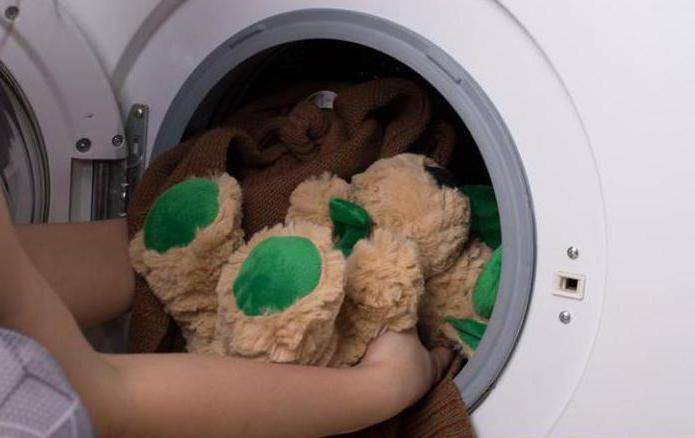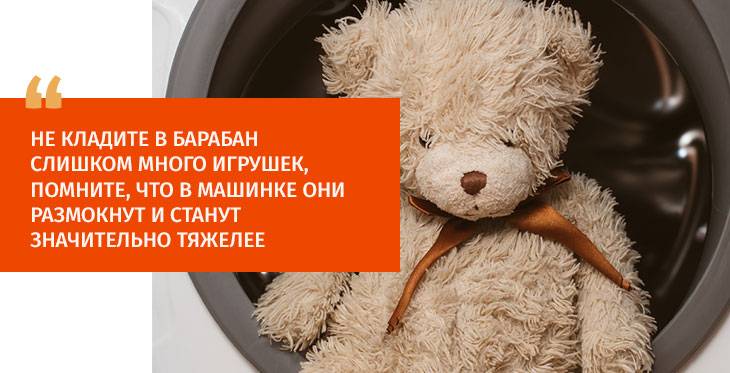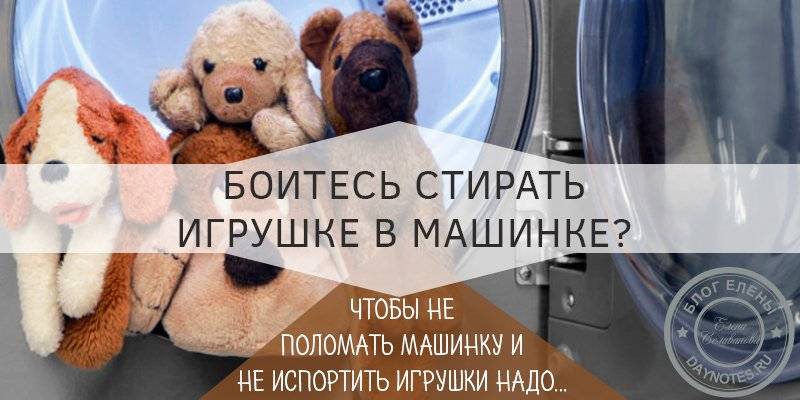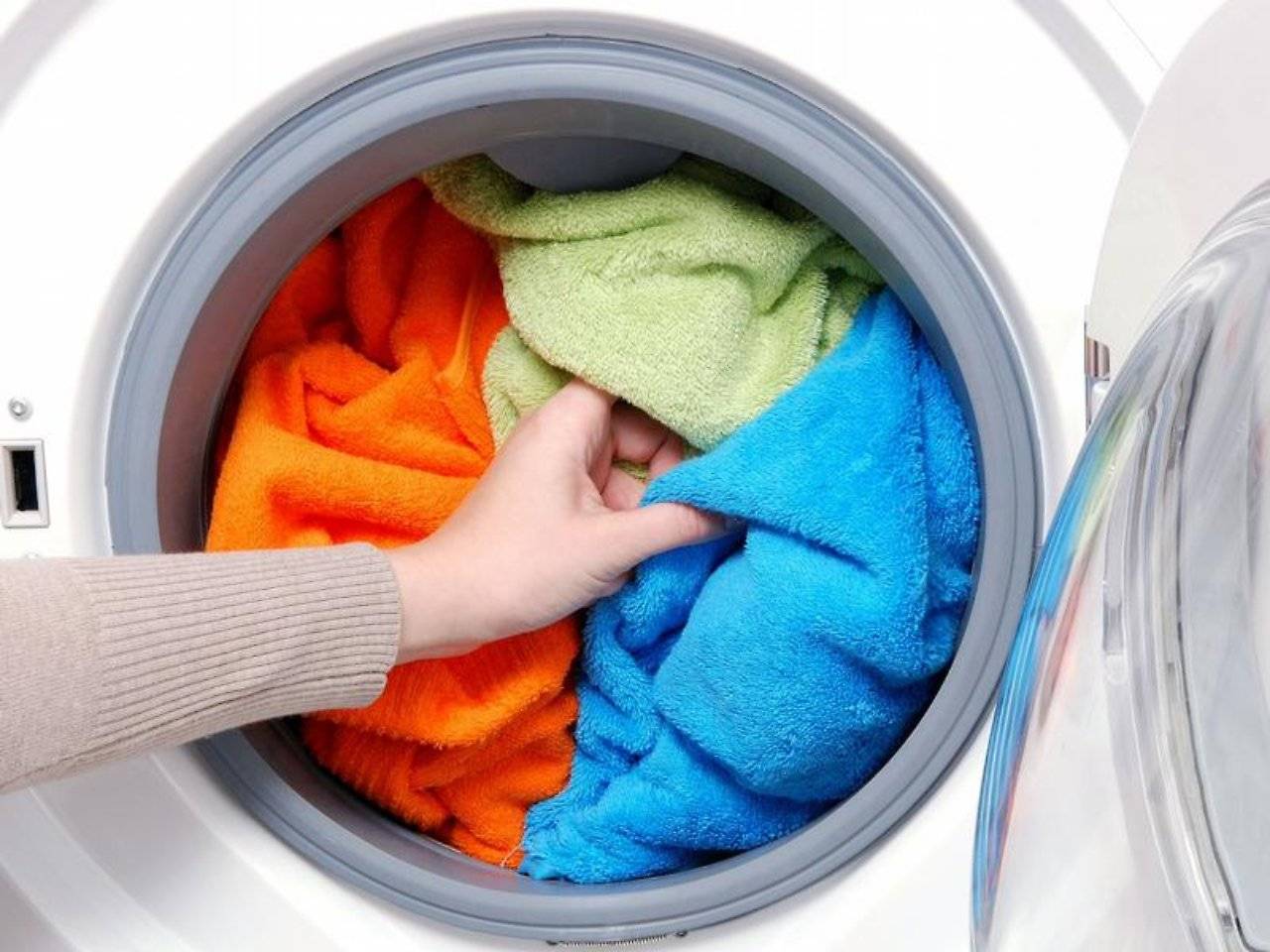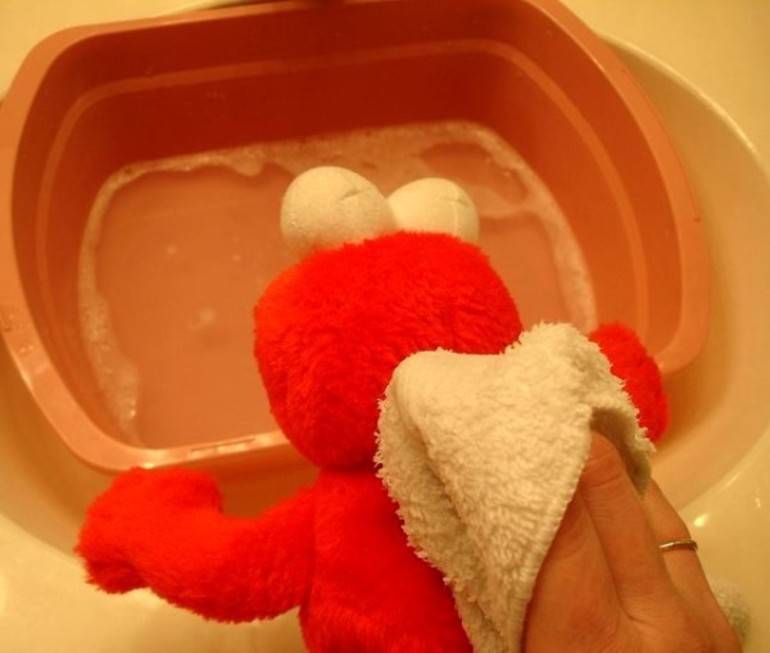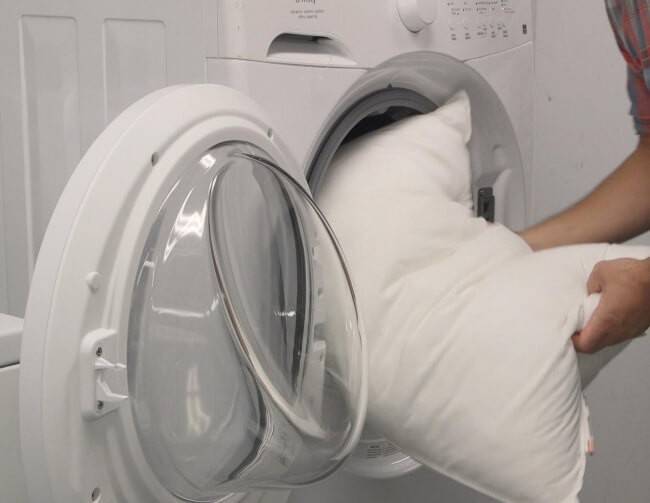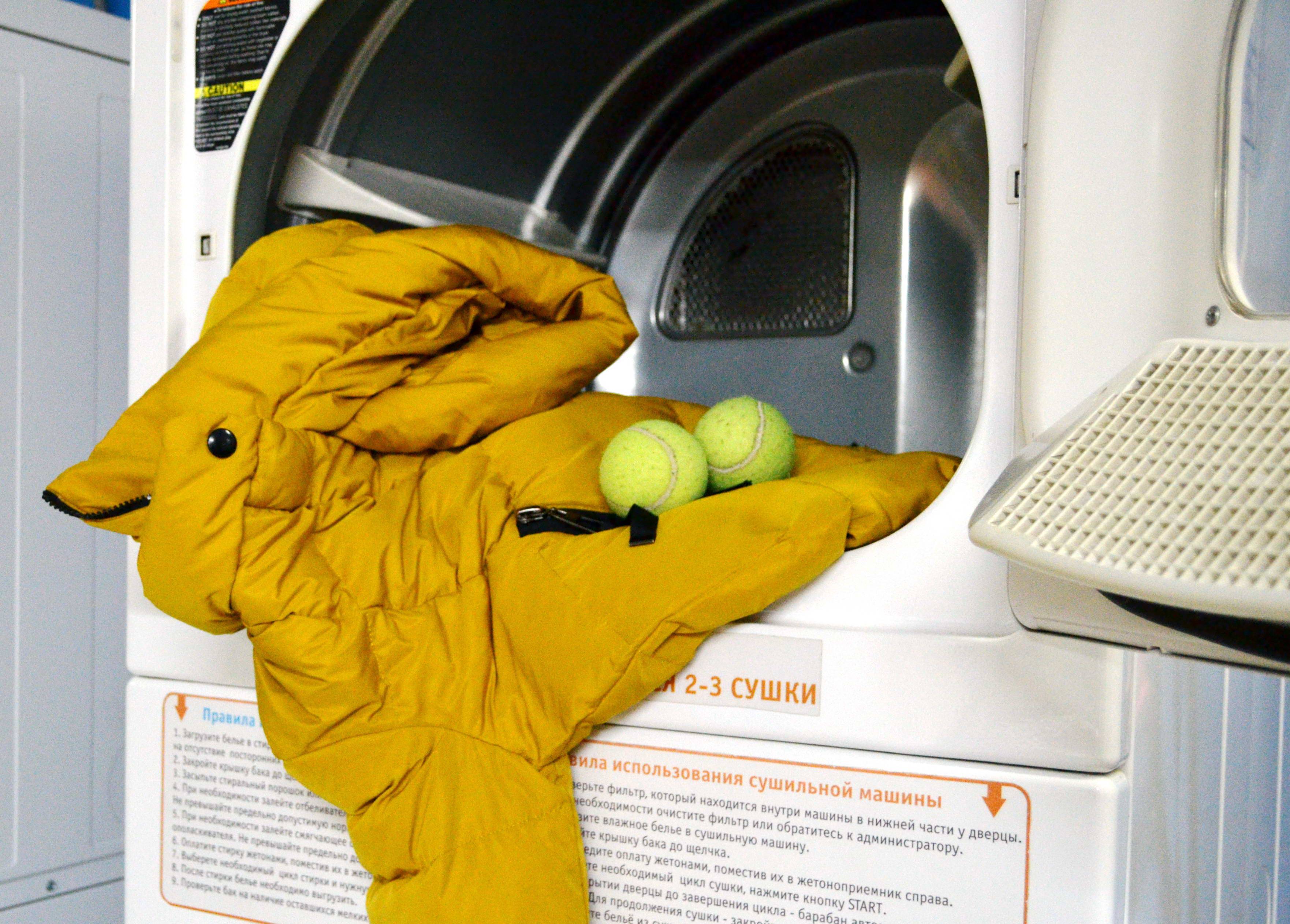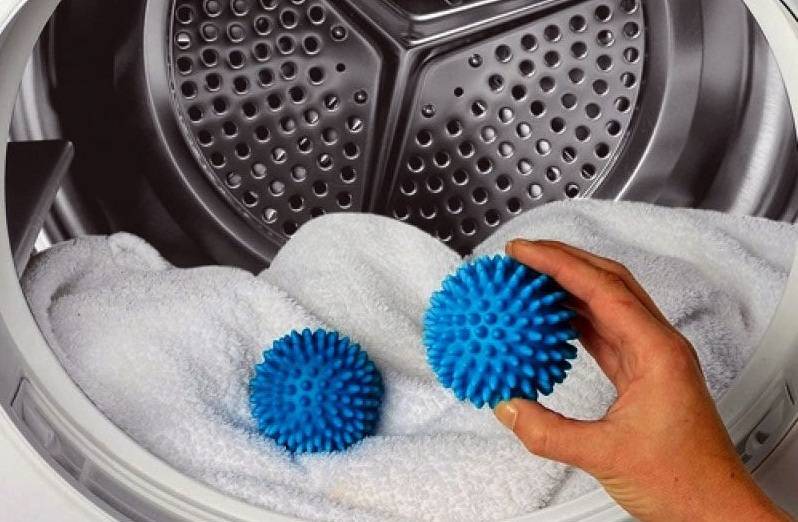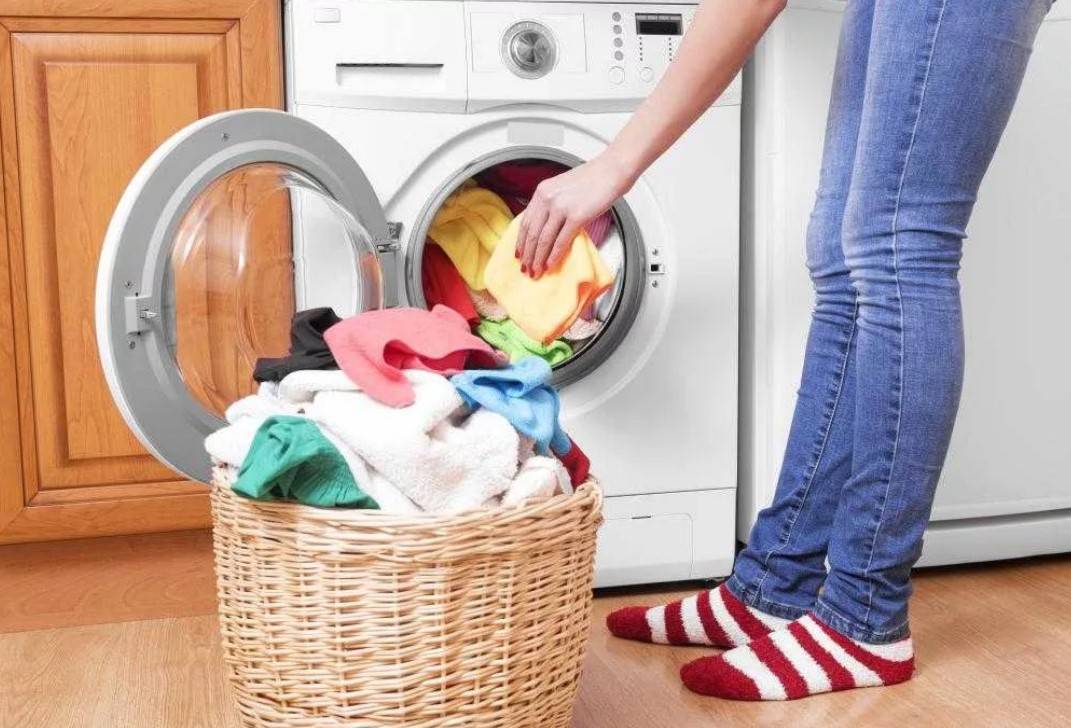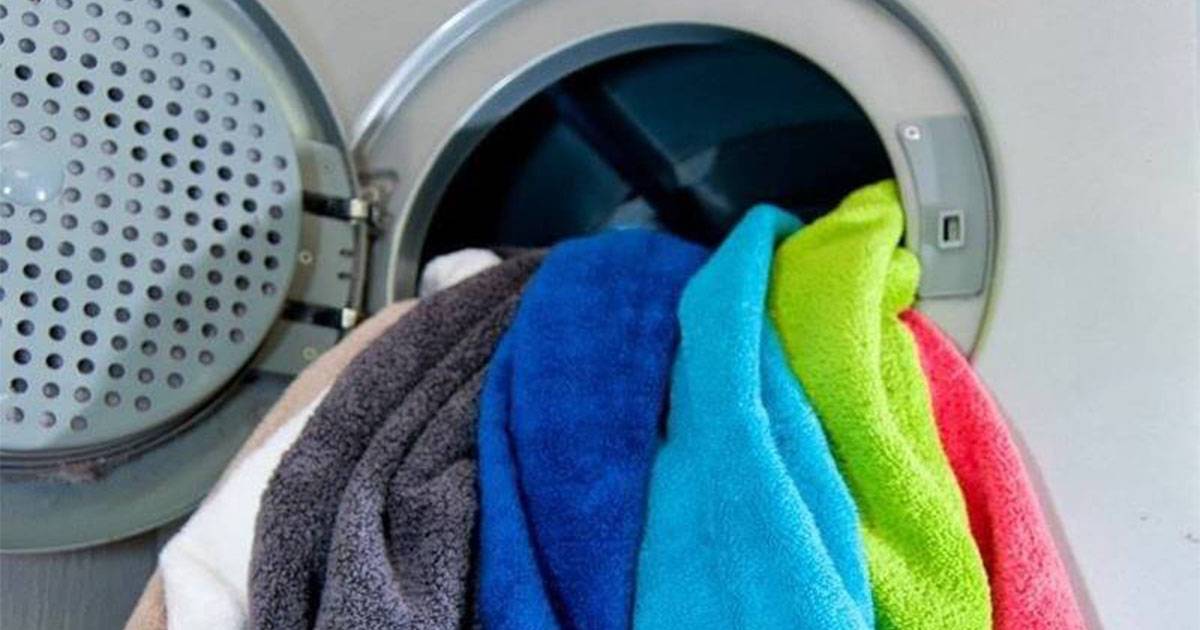Hand wash: basic rules
Don't be upset in advance, but many stuffed animals cannot be machine washed at all. Therefore, it is worth analyzing the main rules for hand washing. Moreover, they are practically in no way inferior to the automatic mode.
If the toy is small and you can squeeze it out with your hands without any problems, it does not have any small elements that can be easily torn off - do not rush to prepare the "washing machine", but use the following tips:
- Heat and pour as much water into a clean container as needed to completely immerse the toy;
- Take baby soap or gentle washing powder, lather the toy with your hands, send it back to the container for half an hour;
- If the material of the product allows, rub it with a medium-hard brush (only for very heavy dirt);
- Now it's time to rinse the product. It must be produced under a stream of warm running water so as not to leave a drop of soap or powder;
- The last stage is squeezing out the remaining water, and "sending" the toy to the sun, or to the battery for drying.
These are the "basic" recommendations
There are some more subtleties of cleaning soft toys that you should also pay close attention to when hand washing:
If toys intended for the development of fine motor skills in a child are being washed, it is worth remembering that they have balls inside. Therefore, they can only be cleaned with dry methods. Washing, and even more so in a typewriter, is prohibited, because the seams can come apart, and you risk not only sending your child's “favorite” to the trash bin, but also getting problems with the washing machine; If the toy "speaks" or "sings", then you will need to carry out a small "operation" - carefully unstitch the seams, remove the batteries, and the electronic control board. Then the "insides" will have to be sewn up so that the filler does not fall out during washing. After the cleaning procedure, again - send the "pet" to dry, then - return all electronic components to their place, and sew up; In the event that spots of fat appear on the bear or bear (which is quite possible), you must first get rid of them. The optimal cleaning mixture is rubbing alcohol or dishwashing detergent. After removing the fat, the toy is washed in the usual way; If the product is made of jersey or velor, there is no filler and small parts in it, then you can resort to washing in a machine
But! Before washing, it is important to put the product in a special net, which is sold in any hardware store, and is used for washing delicate items. If the toy has any additional elements, the net will not let them come off during washing - you just have to sew them back on. This is another plus of this method; Baby's soft toys cannot be washed with ordinary powders! It is necessary to take exclusively baby powders, which do not contain active substances and phosphates.
Alternatively, you can use grated baby soap; After completing the washing by hand, any toy should be thoroughly rinsed. If you do not remove all the "washing" substances, then the child may develop an allergic reaction to them; There are some products that have electronic "stuffing" from head to toe. It will not work to embroider and sew them up. Therefore, in this case, it is worth resorting to dry methods of "washing".
Summing up, it is worth noting that hand washing is, of course, a good solution, but it is important to irradiate toys with a quartz lamp at least once a week, since only it can completely "remove" all microorganisms from the surface of the product
Machine wash
Before properly washing soft toys in a washing machine, you need to check if there are electrical or musical parts inside: flashers, tweeters, talkers and other elements. Anything connected with batteries or other electrical parts must be pulled out, otherwise they may deteriorate in contact with water.
To do this, you must very carefully open the product. Before washing soft toys in the washing machine, remove all hard parts: claws, noses, eyes
It is better to glue them later than to lose them, and then explain to the child for a long time why a bear or a dog with one eye.
Place the fully prepared toy in a cloth bag so as not to be damaged during washing and put it in the machine drum. It is necessary to take into account the material from which the product is sewn, select the correct machine mode, pour in the detergent and you can start washing. While rinsing, add a fabric softener designed for baby clothes. This will help the soft garment stay fluffy and soft even after washing. It is better not to turn on the push-up mode, but it is better to squeeze the water manually with the help of towels.
Drying should be done in a well-ventilated room so that an unpleasant odor does not appear in the soft product. During drying, the toy must be periodically whipped lightly in order for it to dry evenly. After washing, you need to carefully put all the stretched parts back and sew it.
If the musical parts cannot be removed from the toy, then only dry cleaning is necessary.
It is important to remember one point: toys that have ball fillers cannot be washed in a washing machine, otherwise you can ruin not only the toy, but also the machine.
Greasy stains on soft toys can be easily cleaned at home using detergent or pure rubbing alcohol. This should be done with a damp sponge, which should be dipped into one of the selected solutions and applied to the contaminated areas.
Washing a large soft toy
If the toy is very large and does not fit in the washing machine, then it is best to contact a dry cleaner. If this is not possible, then you will have to clean it at home with soap suds. Or there is another option: divide the toy into parts (paws, head, torso) and wash the large stuffed toys separately. And then it will be necessary to collect and sew everything.
How to wash antistress toys
In recent years, anti-stress toys have appeared on our markets. They are pleasant to the touch and create a massage effect and soothe the nervous system. And then the question arises - how to wash an anti-stress soft toy. It is possible and necessary. Dust accumulates in the filler of toys, which must be disposed of. Is it possible to wash such toys in the washing machine, decide for yourself. A conscientious manufacturer produces anti-stress toys made of thick fabric, which allows you to machine wash soft toys, however, if it seems to you that the coating is not thick enough, choose hand wash.
Washing plush toys
This type of toy must be approached correctly. Only expensive toys can be machine washed in a machine, and then on condition that this is allowed by the manufacturer. But even a gentle wash cycle can damage the toy, it is better to hand wash. Manufacturers of high-quality toys do not recommend washing their toys at all, because washing with our products is not compatible with the environmentally friendly dyes that bear cubs are painted with. Better to wash the teddy bear with soap and dry outside.
If the toy has not been cleaned for several months, then there is a possibility that there are germs in it, and even worse, there may be mites. But it doesn't matter. To get rid of ticks, you need to put the toy in a bag and put it in the freezer for 12 hours. This will remove the mites from the toy and make it look fresh.If it's freezing outside, then it's easier to take the toy outside.
Now you know how to wash soft toys, as well as how to apply the dry method of cleaning toys.
It is important to pay attention as often as possible to what state they are in. And even if they are not dirty in appearance, they still need to be cleaned periodically.
Handwash
Hand wash is recommended for plush friends who have glued elements in the form of peepholes, spouts, and also consisting of different materials that, with prolonged contact with water, can stain each other. It is also best to gently wash the items with your hands if they are filled with sawdust.
To wash fabric items, you can use delicate detergents or regular shower gel. Use them to make a warm soapy solution, whip up the foam and apply it with a sponge to the soft toy. Try to rub the product gently so as not to get it wet. After removing dust and existing dirt from the surface, wipe it with a rinsed damp sponge to remove any residual detergent. Put a clean product to dry on the battery.
Stuffed toys that are heavily soiled or sewn from faux fur, which is not enough to simply wipe with a soapy sponge, must be washed in a basin. Dilute the detergent in warm water and soak the items to be cleaned in the solution. If you don't trust washing powder, you can lather each toy with laundry soap, let it sit for a while, rub it, and then wash it in a basin. Then the products must be thoroughly rinsed, wrung out and hung up to dry.
Hand wash toys
Some toys, such as those filled with balls, sawdust, fluff or buckwheat husks, and those that have a mark prohibiting automatic washing, are best washed by hand. To do this, warm water is poured into the basin, a mild shampoo is added and the product is lowered there for 10-15 minutes. After soaking, the toy is thoroughly rinsed, wrung out with a towel and suspended in the open air.
Toys stuffed with balls, sawdust, down and buckwheat husks, as well as with rhinestones, beads and beads are washed by hand
Knitted toys are also best hand washed. The water temperature during soaking, washing and rinsing should be no higher than 30 ℃ to prevent shrinkage of the yarn. Such toys are squeezed out very carefully, not twisting, but gently blotting with a towel. Knits are dried horizontally on a flat surface in a well-ventilated place.
Garments made of fabric with a long pile and with various decorations, such as rhinestones, beads or beads, are also washed by hand.
Washing in an automatic machine
Does the tag on the toy indicate machine washable? Then your task becomes much easier.
- Use only special detergents designed for baby clothes or hypoallergenic cleaning agents for washing.
-
Place soft toys with plastics and long nap in a special washing bag. Keep in mind that machine wash is usually not recommended for toys with small plastic parts - eyes, nose, etc. However, if you remove them while washing or put such a toy in a pillowcase, most likely, the hygiene procedure will not harm the stuffed animal or doll.
- Select a delicate wash cycle. To prevent the fabric from shedding, set the temperature to 30 degrees.
- Be sure to add an extra rinse to completely remove the remaining detergent from the toy, as well as baby softener to keep it fluffy.
-
Spinning in a machine when washing soft toys at a speed of more than 600 rpm is not recommended due to the high risk of deformation of products. You can replace it with a water drain.
- When the wash program ends and you remove the wet toys from the drum, place them on a horizontal surface (dryer or table) for a few hours to allow excess water to drain.When the garments are considerably lighter, hang them on a clothesline over the radiator, or leave them lying on the dryer until they are completely dry.
If the soft toy is too large to fit into the drum of the washing machine, you can dry-clean it. In many establishments of this nature, large-sized items are cleaned.
The easiest way to do laundry of large toys is to dry cleaners.
If you don’t have such an opportunity and you don’t want to manually scrub the "big man", open the toy, take out the filler and wash the product in a typewriter. After drying, stuff the toy again and sew it back up.
Washing during quarantine
In the autumn-winter period, children and adults are overcome by infectious and viral diseases. In such a difficult time, every mom should know how to wash her baby's teddy bear and other stuffed toys. After all, they accumulate microbes on themselves and, as a result, are a source of infection. You need to know the following:
- To somehow reduce the risk, you need to remove as many toys as possible in the closet. The rest will have to be washed several times a week, choosing a temperature regime of at least 60 degrees.
- Dry on a clean surface treated with an antimicrobial agent.
- Bacteria are effectively destroyed even in severe frost. To do this, you need to leave your pet for one night on the balcony.
- Hot steam will also be a good helper in the fight against germs. It is enough to turn on the steaming mode and casually process the fabric, trying not to touch the surface itself, so as not to damage the plush.
A soft toy is not only a loyal and beloved friend of every child, but also a source of health hazard. Therefore, it requires utmost attention and careful care.
It is important to do it on time, then the product will last a long time, and the baby will be happy
Wet cleaning method
In this way, you can wash felt toys, which are additionally decorated with plastic parts or with balls inside.
- You will need a rag and baby soap.
- Lather the cloth well, wring it out thoroughly and you can wipe the dirty areas.
- In the same way, it is necessary to clean the toy, only with a clean cloth moistened with water.
- It remains only to dry it.
- If these are things with details, then you can pour warm water into a small container.
- Add baby shampoo, soap, or powder.
- Everything is whipped to get a thick foam, which is used for washing.
- After the performed procedure, the product should be wiped with a slightly damp cloth. And blot with a terrycloth towel.
- You can dry either on a small piece of cloth or on a battery.
- The plush toy can be brushed after drying.
Post Views: 697
- Time management for housewives
- How to plan your family budget
- How and how to remove various stains and dirt
- Microfiber for cleaning
Which toys cannot be washed?
Soft animals, being on the shelves, accumulate a large amount of dust, dirt and serve as an excellent breeding ground for bacteria and dust mites. This can negatively affect the health of the child and other residents of the apartment with allergies.
This is why it is so important to periodically clean your plush items.
Information about whether soft toys can be washed is usually indicated on the label. Also, the instructions contain information on proper care: washing, ironing and drying. However, in some cases, the label is lost, the paint on it is erased, then you can find out if you can wash the toy by carefully examining it. The procedure is contraindicated if:
- there are details that are glued - eyes, buttons, jewelry, etc. During the washing process, the water can dissolve the glue, and then they fly off. Moreover, small parts caught in the washing machine easily break the equipment;
- toys are musical. On contact with water, mechanisms and batteries inside deteriorate and stop working.The toy itself will be fine, but it will no longer be able to speak or sing;
- fillers are made from natural materials - sawdust, feathers, husks;
- the plush friend is too big. In this case, it can only be washed by hand if there is a large capacity. Automatic washing is prohibited;
- materials of the "outer shell" of natural origin. They cannot be washed, because, unlike synthetics, natural fabrics shrink, fade, and deform.
We dry products
How to wash a large one at home if there is no way to wash a large soft toy in an apartment. Washing a large teddy bear at home is often done with baking soda. The product is evenly distributed over the pile, rubbed in, then after a while it is combed out with a thick comb or a stiff brush.
More effective cleaning agents will help remove stains. It can be a foam to remove stains from furniture upholstery.
After cleaning, it is important to remove the residues properly.
Want to make your soft toys look attractive again. Disorders can be eliminated by gentle action, using a brush or sponge when washing is unacceptable.
If you need to clean a musical soft toy that cannot be washed due to the presence of numerous devices inside, it is problematic to remove them for safe water procedures, sometimes it is possible to clean soft toys without washing at home using a vacuum by choosing a special attachment. It is a modernized alternative to the safe cleaning with starch, well known to our great-grandmothers.
You will need a tight, impervious bag, slightly larger than the product. Next, you should pour starch at the rate of each toy in a glass.
The starch cleaning event then turns into a full-fledged workout. The hermetically sealed bag will have to be shaken for half an hour, the longer and more vigorously the better. Starch residues are easily removed from the surface, the attractive appearance of the fur after interaction with a potato product will pleasantly amaze.
A soft toy that cannot be washed is doubly forbidden to machine dry. The following options have proven themselves quite well. It should be straightened and dried in a well-ventilated place; during the heated season, lay out on a battery to dry. If there is no fear that the toy will stretch out, it is convenient to dry it by hanging it on a home dryer or an old clothesline.
Dry cleaning method
Such cleaning can be done at home using folk remedies, as well as a vacuum cleaner.
Cleaning toys with baking soda
One or more items should be placed in a large cellophane bag, sprinkled with baking soda, tied and shaken for about 5 minutes. Pour soda depending on the size of the toys and their quantity (from about ½ glass, to one whole). After this procedure, the bag must be untied, the contents pulled out, and the remains of soda must be cleaned with a dry brush. The dust will go along with it.
Vacuuming toys
Large toys can be well cleaned with a vacuum cleaner using a nozzle that cleans upholstered furniture. The power on the vacuum cleaner must be set small so that small elements do not suck in: noses, eyes or something else.
Wet cleaning with soap suds
In advance, you need to prepare a soapy solution with a thick foam. Baby shampoos or allergen-free cleaning products can be used in place of soap. You need to start cleaning the toy from the most contaminated places. Apply soapy water with a sponge to the desired area and immediately try to remove moisture. It is good to do this with microfiber napkins, they absorb dust well and wipe dry.
During cleaning, rinse the cloth frequently in clean hot water and wring it out well. So, section by section, the whole toy will become as good as new.To make the toy soft after wet cleaning, sprinkle it with fabric softener from a spray bottle and then dry it with a hair dryer
If necessary, after that, it must be combed or smoothed out gently with your hands in different directions.
You can completely dry the product on a battery or in the fresh air. If the toy contains waterproof parts on the surface, then it is necessary to clean them with a toothbrush, penetrating into depressions or small cracks. Then you need to wipe these parts with a clean towel. You can also disinfect soft toys with hydrogen peroxide by wiping them with this solution.
What and how can you wash
Allergists recommend using the following products:
- special powders, gels and conditioners for washing children's clothes;
- baby soap;
- laundry soap;
- any shampoo.
For washing soft toys, use special powders for baby clothes.
Many housewives wash soft toys only by hand. The instructions for the product or the label on it will tell you if washing is allowed in the machine. This will greatly facilitate your task.
Exclusively manual cleaning is used in cases where:
- the toy is sewn from heterogeneous materials;
- there are glued parts;
- the product has a nose, eyes, mouth made of colored plastic, which can be scratched or rubbed off when machine washed;
- sawdust, rice, buckwheat husks, straw, cotton wool were used to fill the toy;
- the product has a long silky pile, which can foul and lose its shine;
- the toy is very soft, prone to deformation and stretching.
If you machine wash such items, you may run into irreparable problems. Fabrics of different types can stretch or shrink unevenly, the filler can become damp and crumpled (which will lead to severe deformation of the toy), and a pretty face will lose all its charm.
Most plush toys should be straightened and hung dry after washing.
The peculiarities of cleaning soft toys from dirt depend not only on the ability to wash by hand, in a typewriter or using other cleaning methods. There are many nuances to consider.
To prevent the child's pet from losing its shape after washing, it should be straightened and dried in warmth, hanging it vertically or simply leaving it to "sit" on the dryer.
Hanging is unacceptable for knitted toys: the yarn, regardless of its composition (especially if it is wool), shrinks during washing and can stretch during drying, which will lead to deformation of the product. Therefore, dry knitted toys horizontally on an unfolded terry towel.
In the washing machine
The easiest and most effective way to clean your plush toys is to machine wash them.
But not all toys can be washed in this way, so you need to pay attention to the tag of the soft product. Most often, small toys without musical functions are washed in the washing machine.
To prevent the possibility of staining light-colored items, wash them separately from colored and dark items. Before washing, remove all removable parts from toys (bows, buttons, brooches). To preserve the appearance of your products, you need to put them in a special laundry bag for delicate items.
You should set the delicate mode without spinning, since even a slight spin can change the shape of the toy. The washing temperature should not exceed 30 degrees, and the powder should be for delicate items or for children. Rinse soft items at least twice as the detergent may remain in the filler.
After washing, you need to squeeze the toys out with your hands a little, wrap them in a terry towel and leave to dry on a cotton cloth. Do not hang wet items, as after washing the filler becomes heavy and sinks down. If the teddy pet has a long pile, it must be combed while still wet. Removable elements can be returned to their place only after the product has completely dried.
The nuances of the automatic wash process
Washing should be done with non-aggressive cleaning agents. It is better to use baby washing powder, in order to avoid an allergic reaction in the child to the remaining aggressive substances. The temperature is set at 30 degrees. This will prevent damage to the fabric.
Rinsing can be done with fabric softener. When spinning, use an extra rinse to remove any cleaning agent residue from the stuffed animal. The toy may undergo changes in individual parts or in its original form. Shedding fabric after an automatic wash is a sign of poor quality.
The presence of streaks on the fabric may indicate a poor-quality and unsafe dye. If defects appear on the fabric of the toy after automatic washing, it is better not to give the soft friend to the baby, but to come up with a beautiful story about his leaving home.
Hand wash method
It is possible to wash children's toys for certain indications not in a washing machine, but by hand (these recommendations can be seen on the manufacturer's label). This is done like this:
- water with a temperature of approximately 40 C is drawn into a basin specially designated for washing;
- it is necessary to dissolve the prepared substance for washing in water;
- put toys in water, while protecting the parts that are glued from moisture as much as possible;
- clean more problem areas with a brush or sponge;
- rinse the toy (change the water several times);
- hang the product on a rope and dry well.
But you need to remember that washing toys in any chosen way will not be enough, since harmful microorganisms will still remain. In order to rid the pet of the crumbs of microbes and other pests, additional methods should be applied:
- If the item is small, you can put it in a bag, tie it well and put it in a low-temperature chamber for two days. It should be noted that harmful microorganisms die at low temperatures. If the item is large, you can take it out on the balcony in winter (in the cold);
- For disinfection, use a lamp with ultraviolet radiation, which adversely affects the development and vital activity of microbes.
Also, those toys that cannot be washed are often cleaned with vacuum cleaners. For this method, you need to use a small tip. It is better to keep the power to a minimum in the process. You can also use starch and soda, that is, the toy is placed in a bag and sprinkled with this composition. Then the bag is tied and shaken thoroughly, after which the things are removed, and the excess starch is cleaned with a brush.
Attention! There are a lot of methods for caring for plush animals, the main thing is that this care must be done constantly. Thus, cleaning pets must be carried out at least once every thirty days so that the crumbs will never have allergic reactions.
How to hand wash correctly
Of course, it is best to wash the stuffed animals by hand. It will take a little more time and effort, but practically guarantees the preservation of aesthetic appeal. To clean synthetic toys you will need:
- Pre-soak the product.
- Lather the "fur" thoroughly.
- Rub especially soiled areas.
- Rinse and dry.
It is necessary to soak the toy in warm water for 15-30 minutes. It is worth adding a little diluted washing powder or soap shavings to the basin. Stubborn stains can be treated with a stain remover for synthetics or upholstery, another option is to rub with bile soap.
After soaking, gel or foam is applied to the surface of the toy, gently washed, trying not to change the direction of the pile. It is allowed to use a soft brush or an old toothbrush for products without long bristles. The procedure should be carried out as quickly as possible.
After completing the "hygiene procedures", teddy bears and bunnies are left to drain on the grate. It is strictly forbidden to hang a wet product. After drying, the pile is gently combed with a comb.
Washing in a washing machine
When using a washing machine, it is recommended to make sure that the product is suitable for this. Check all the seams, if the material in the drum is deformed, all seams and holes will creep out more, which threatens to lose the filler.
Washing soft toys in the washing machine includes the following steps:
- Removing a musical element. If the pattern of the animal does not imply taking out the structure, then rip the seam at the most inconspicuous place, sew again.
- Place the item in a special laundry bag, if not available, use a pillowcase. If part of the animal is lost during washing, the part will remain inside the bag. This action will prevent damage to the machine.
- Set the mode in the washing machine for delicate or hand wash with a temperature of no more than 30 degrees Celsius.
- Pour baby powder into the detergent drawer or finely grate baby soap. To prevent shedding, add half a teaspoon of citric acid to the drum. You can wash soft toys using fabric softener.
- After completing a complete wash cycle, activate an additional rinse.
- Turn off the spin, squeeze the wet animal with your hands. If the label has a mark that spinning is possible, set the recommended number of revolutions to a maximum of 600.
- Dry it.
How do I wash musical products?
If there is a small stain on the toy with sound effects, you can fix it by hand. To do this, it is enough to dissolve the detergent in warm water (1 tablespoon per 1 glass of water), apply to a sponge and wipe the contaminated area from top to bottom until the stain disappears. After that, you need to replace the soap solution with clean water and repeat the procedure.
If the contamination is more serious, you need to do the following:
- Feel the product and locate the electronics. It is often located near the seam.
- Unpick part of the seam and gently take out the electronic device.
- Sew up the seam and wash the product in an automatic machine or by hand using baby powder.
- Dry the toy, open the seam and insert the electronic device back.
The same principle is used to clean plush items with squeaks.
If you follow all the steps correctly, a clean soft pet will delight the baby again.
Features of washing modes for various types of soft toys
For all types of products, it is required to set the mildest exposure mode on the automatic machine (possible names: "gentle", "delicate", "wool", etc.). The degree of water heating is set in accordance with the label, if it is absent, then at a safe level of 30-40 ° C. The spin should be turned off so as not to damage the top layer.
For heavy contamination, pre-soaking in soapy water is permissible. Adding a little rubbing alcohol to the solution will remove stubborn stains. Also, before starting the wash, be sure to make sure that there are no holes or loose seams on the product.
Large
Large stuffed toys are difficult to wash. The dimensions force them to be tamped tightly into an automatic machine, which does not allow for a full cleaning - the drum scrolls with difficulty, the detergent is distributed unevenly and is poorly rinsed out. Some products become too heavy when wet and can damage household appliances.
For washing large toys, it is better to choose industrial machines.If this is not possible, then the product should be unstuck and the filler removed from it. The resulting seam must be sewn up and the top of the toy must be washed in a washing machine in a protective bag. Dry the casing preferably in an upright position.
The filler must be treated with a quartz lamp or steamer. After the shell is completely dry, the inner layer is put back and the toy is sewn up.
Musical
While it is okay to wash your musical toys in a washing machine, some precautions should be taken. Before washing, be sure to remove the batteries, open the toy and remove the wiring, electronic mechanism
It is usually located on the belly or back of the toy. The resulting hole must be sewn over the edge.
The toy is washed according to the recommendations on the label and dried next to the battery. At the end of the procedures, an electronic mechanism is placed inside, its operability is checked and the product is carefully sewn up.
Plush
Plush toys are easy enough to wash in a machine. First, you need to cut off all small parts from them and place them in a protective bag so that the fluff during cleaning does not get into the drum and clog the mechanism of the device. It also protects the delicate fabric of the top layer from damage.
Small items should be hung vertically, larger items should be dried with soft towels and placed horizontally to prevent deformation of the filler. Drying is carried out in the open air or in a room with good ventilation in order to prevent the product from becoming "rotten".
During the drying process, the toy is periodically shaken and turned over so that the filler does not fall off, and also gently comb the villi so that they do not stick together.
How to do without washing?
It is often forbidden to wash musical toys and large stuffed animals, but it is also necessary to clean them of dirt. In this case, a wet and dry cleaning method will come to the rescue.
Dry cleaning
This method is suitable for soft toys that cannot be washed or exposed to moisture at all. These are musical products, antistress filled with small balls.
Dry cleaning can be done in two ways.
1 way
To keep the toys clean, you need to vacuum them once every 2 weeks. If an allergic person lives in the apartment, the procedure should be carried out more often - every 7 days. The vacuum cleaner will clean the lint and the top layer of the filler from dust and mites.
2 way
You can remove various contaminants with starch. This requires:
- Place the toy in a large bag of starch.
- Tie it tightly.
- Shake vigorously for 7-10 minutes, rubbing starch into the pile.
- Remove from the package.
- Brush off with a brush.
- Comb the pile with a fine-toothed comb.
The starch will absorb dust, dirt, unpleasant odors, the toy will noticeably "freshen up".
3 way
You can clean the plush item with baking soda. To do this, you need to rub it into the pile, and then comb it out with a comb with frequent hard teeth. This method will help freshen the product, remove light dirt.
4 way
You can also use a dry carpet cleaner such as Vanish. However, such household chemicals often cause allergies, so this method can only be used as a last resort.
Wet cleaning
This type of cleaning is applicable to toys that can come in contact with water but are difficult to wash. These include "plush giants", as well as products with poorly adhered parts.
To clean a stuffed animal, you need to follow the following procedure:
- Pour warm water into a basin.
- Dilute baby powder, gel or shampoo in it.
- Stir well to create a large amount of foam.
- Clean the product with a brush, picking up foam.
- Especially carefully go over the places where there are stains; to remove them, you can use lather from laundry soap.
- Remove residues of the product with a clean damp cloth or sponge.
- Gently wring out your plush friend by wrapping it in a terry towel.
- Dry in the fresh air or in a well ventilated area.
Care and video
In order for the toy to please the child for a long time, it is important to adhere to some tips for caring for it:
- Plush animals should be stored in special baskets or boxes - this will avoid the accumulation of dust in them.
- Cleaning of soft toys intended for the play of the smallest children, as well as those that are in the immediate vicinity of newborns, must be carried out at least 1 time in 2 months. Toys in the home of adults should be cleaned every six months.
- Before you clean a toy at home, you need to study its composition, find out the type of fabric and filler.
- When cleaning, you should strictly follow all the recommendations - this will preserve the original appearance of the product.
So, soft toys are not only possible, but also necessary to be washed. Timely, and most importantly, correct washing of plush animals will help to maintain not only cleanliness in the house, but also to protect the baby from the development of various diseases, including allergies and bronchitis.

